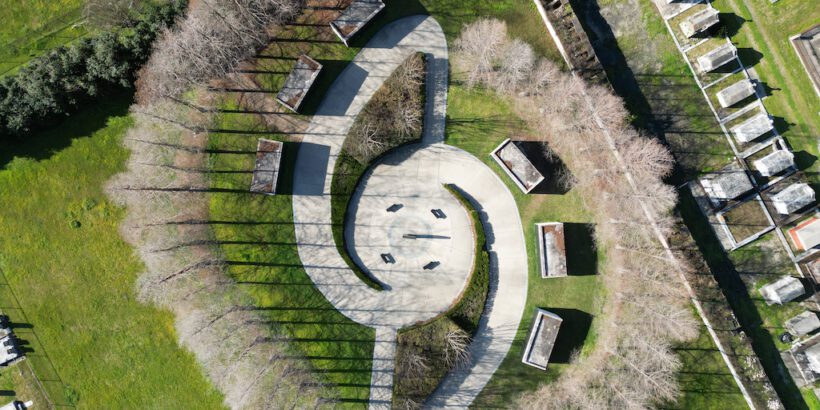If you’re visiting New Orleans, chances are Hurricane Katrina will be top of mind at some point.
One place I recommend visiting is the Hurricane Katrina Memorial, where you can pay your respects to those who lost their lives, especially those who remain unidentified or unclaimed.
Below, I’ll give you some tips on visiting and share what my experience was like at the memorial.
Table of Contents
What is the Hurricane Katrina Memorial?
The Hurricane Katrina Memorial is a poignant tribute located in New Orleans that memorializes those who lost their life during the storm or in its aftermath.
It’s where over 80 individuals were laid to rest who were unclaimed or unidentified and it offers a peaceful space for reflection while standing as a solemn reminder of the devastating impact of the hurricane on the Gulf Coast and New Orleans.
Where is the Hurricane Katrina Memorial?
The Hurricane Katrina Memorial is located at: 5056 Canal St, New Orleans, LA 70119.
You can park on the side of Canal street just outside the memorial or park in one of the graveyards but be mindful of your surroundings. It’s located near the Canal Streetcar Line stop at both Saint Anthony and Cemeteries.
In addition, it’s close to the historic beignet shop, Morning Call, and people often stop there between tours.
Hurricane Katrina background
In the aftermath of Hurricane Katrina, which hit in August of 2005 and proved to be one of the most devastating natural disasters in U.S. history, the precise death toll remains uncertain.
While the general consensus hovers around 1,400 fatalities, the figures are subject to ongoing debate. Various reports suggest numbers ranging from 1,200 to 1,800, with some claims reaching as high as 4,000.
What’s fascinating to me is the continual revision of these statistics by significant margins. A noteworthy instance is the National Hurricane Center (NHC) revising their 2023 figures from 1,833 to 1,392.
The challenge in determining accurate counts arises from the complexity of attributing the cause of death, especially when it involves situations indirectly linked to the hurricane.
For instance, identifying deaths directly caused by drowning in floodwaters is pretty clear-cut, but determining the impact of pre-existing conditions exacerbated by the heat and stress during evacuation poses a challenge.
Despite these efforts, there’s a lingering concern that a significant number of indigent or homeless individuals might not have been considered in the official counts, further contributing to the uncertainty surrounding the true toll of Hurricane Katrina.
For those unclaimed individuals who were recovered, they have found their place of remembrance at the Katrina Memorial in New Orleans.
Related: Visiting the “Brad Pitt Homes” in the Lower Ninth Ward of New Orleans
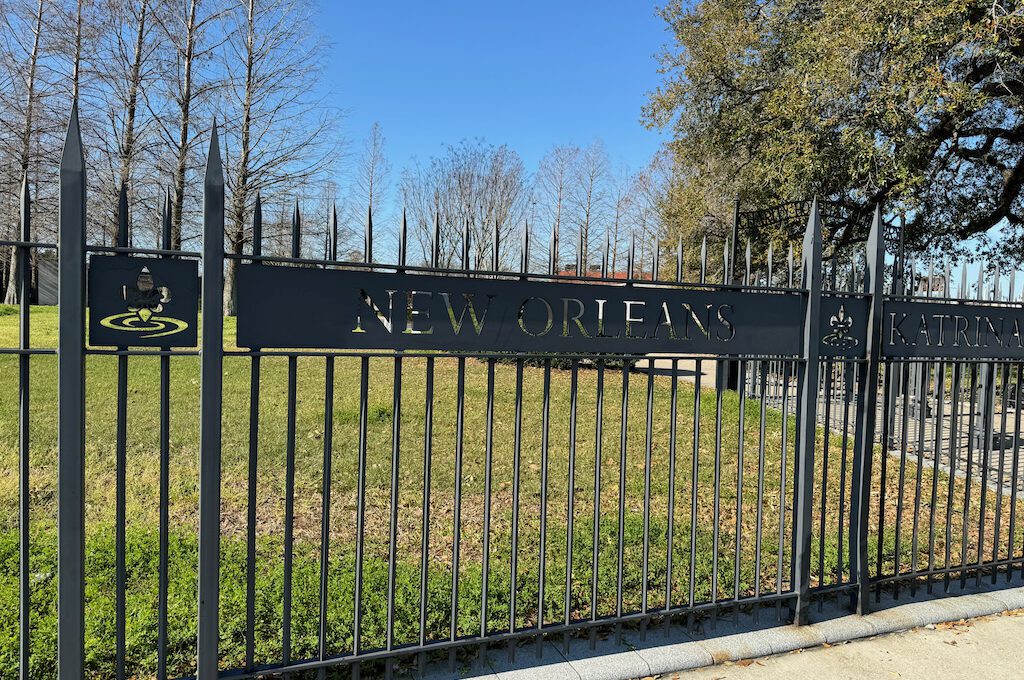
This poignant memorial serves as a solemn tribute to over 80 individuals, encompassing both those whose identities are acknowledged and others who remain unclaimed.
The dedication ceremony, held on August 28, 2008, precisely three years post-Katrina, faced a potential disruption from Hurricane Gustav but persevered.
At 9:28 AM, mirroring the moment when the initial levee breached, the symbolic tolling of bells commenced. Mayor Ray Nagin then guided the assembly in prayer, while the last bodies were respectfully interred, accompanied by the soulful notes of Ken Ferdinand’s trumpet playing “Amazing Grace.”
Today, the memorial stands as a dedicated space to honor and remember those affected by Hurricane Katrina, ensuring that their stories and lives are recognized and memorialized.
The site of the memorial holds not only emotional significance but also has a rich and historic background.
Dating back to 1848, the grounds were originally acquired by Charity Hospital and designated as a Potters field, functioning as a burial ground for the indigent.
Throughout its history, this location has played a crucial role in interring the unclaimed individuals from various corners of New Orleans.
This cemetery has witnessed the interment of numerous victims, particularly during major disease outbreaks such as yellow fever and influenza epidemics.
Additionally, the grounds house the ashes of individuals who generously donated their remains to the Louisiana State Anatomical Board for Medical Education, and you can find a grave marker for these in the field.
Louisiana’s distinctive cemetery style features above-ground crypts. However, the graveyard associated with the Katrina Memorial stands out as one of the few where bodies are interred underground.
When the monument was erected, careful measures were taken to preserve the integrity of the graves beneath, although the challenges posed by the size and scope of the memorial make you wonder about the success of these efforts. Perhaps they pulled it off.
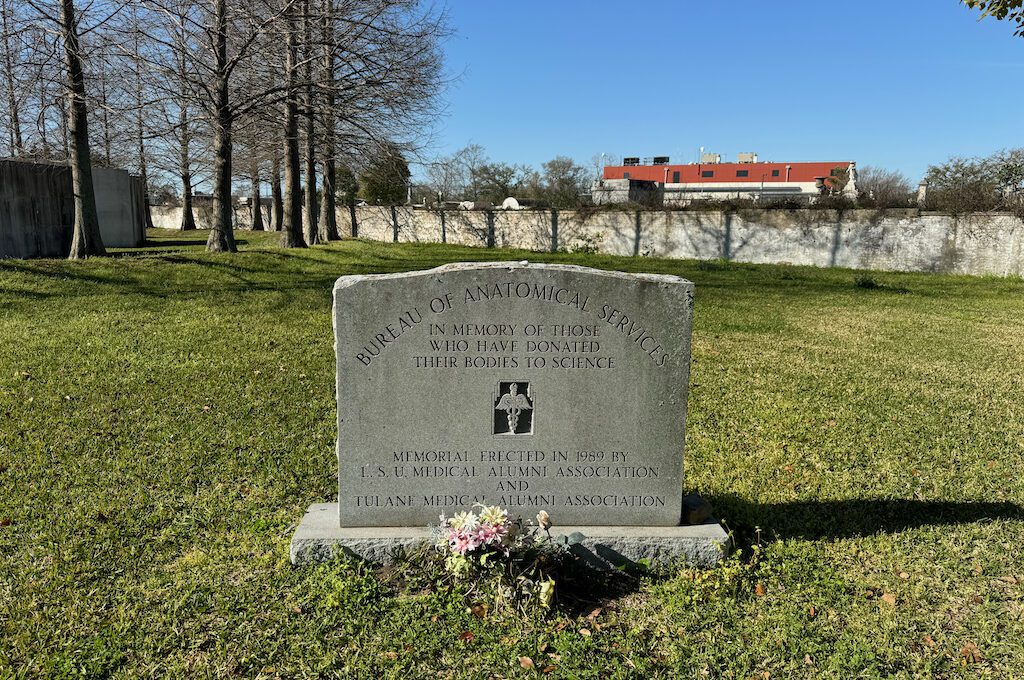
Visiting the memorial
During our visit in the late morning during the week, we found ourselves as the sole visitors.
Notably, there isn’t a dedicated parking lot adjacent to the memorial. Visitors can opt to park at neighboring graveyards and walk over or park on the side of the street.
As we entered the compact Katrina Memorial, I was impressed by its thoughtful design. The surroundings, with dormant trees adding a unique ambiance, created an interesting atmosphere during our visit.
Notably, the memorial is shaped like a hurricane, a detail best appreciated from an aerial perspective.
Eager to capture this distinctive feature, I decided to deploy my drone, despite initial reservations about flying it over a cemetery and memorial site. Observing other journalists and outlets using drones for aerial shots, and after verifying compliance with FAA restrictions for the area, I felt reassured about proceeding.
Also, with no other visitors present at the time, I ensured I wouldn’t disturb anyone paying their respects.
Once the drone was airborne, the striking image of the hurricane-shaped memorial became apparent, adding a profound layer of meaning when viewed from this elevated perspective.
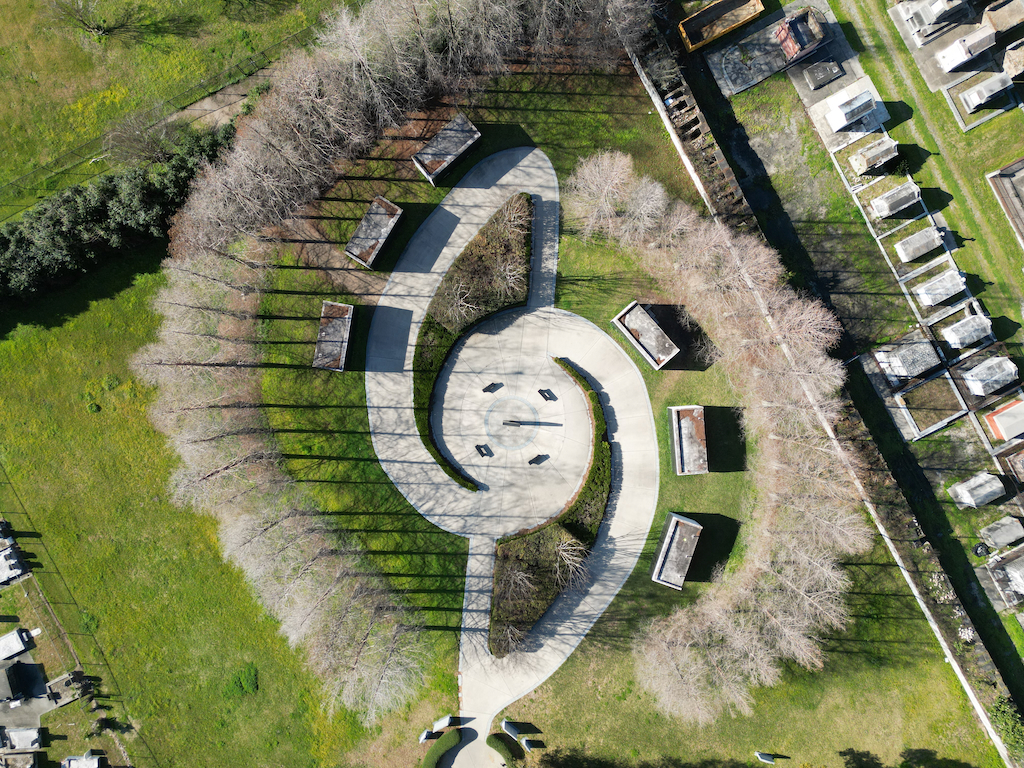
The memorial features six mausoleum structures, standing at approximately 9 feet tall, each housing 18 crypts where individuals have been interred.
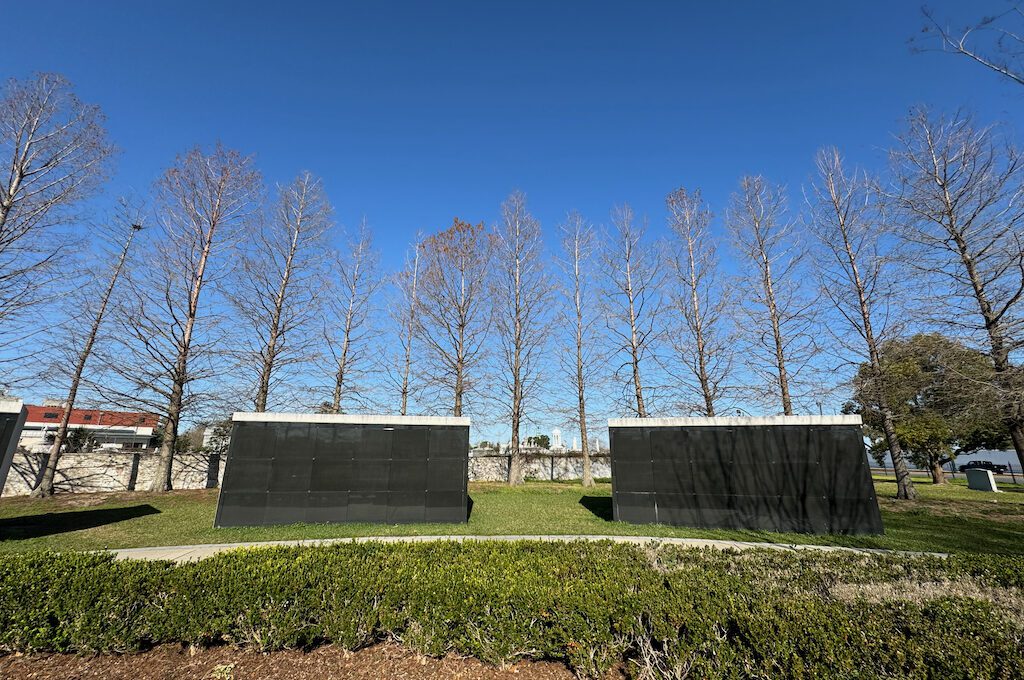
At the center, a plaque narrates the tragedy of Hurricane Katrina, emphasizing its profound impact on the Gulf Coast, particularly New Orleans, attributed to the failure of the levee system.
The poignant words from Jeffrey House, the Chief Deputy Coroner, offer a moving perspective that encourages visitors to reflect on the magnitude of the catastrophe.
As you explore the memorial, you can meander around the various mausoleums, creating a serene and contemplative experience. For those seeking a moment of quiet reflection on the disaster, there are small benches situated in the middle of the memorial.
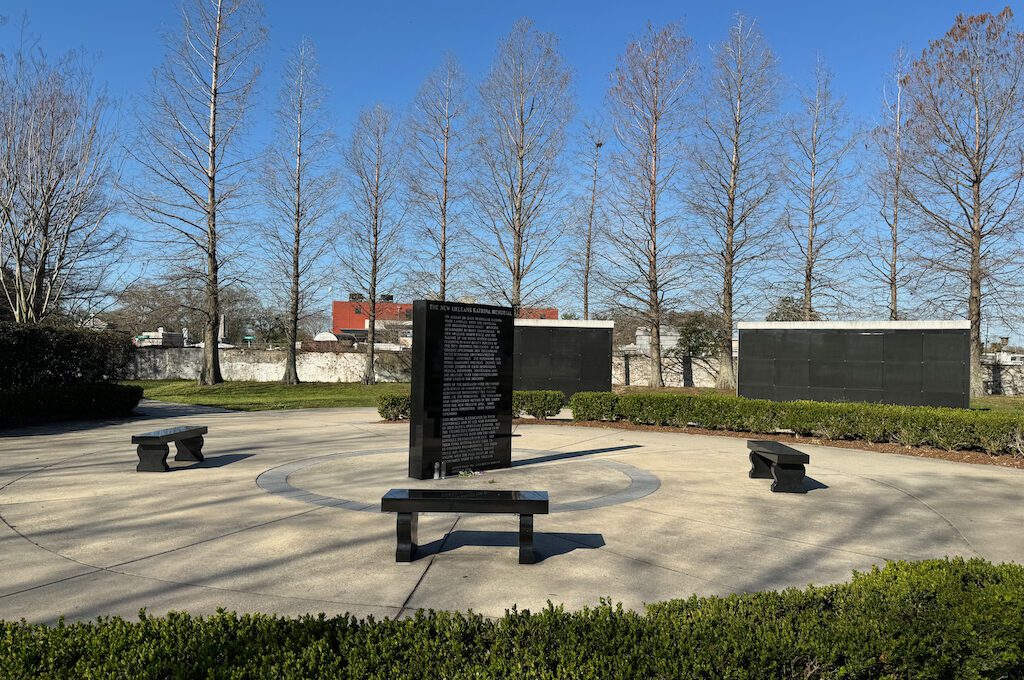
Final word
The memorial provides a peaceful space for contemplation and remembrance, and I highly recommend visiting. It’s worth noting that unless accompanied by a tour guide, your visit is likely to be brief due to its compact size. So, you don’t need to plan a lot of time for the stop. Although, as mentioned above, you may want to visit Morning Call, especially if you are on a long day trip in the area.
Daniel Gillaspia is the Founder of UponArriving.com and the credit card app, WalletFlo. He is a former attorney turned travel expert covering destinations along with TSA, airline, and hotel policies. Since 2014, his content has been featured in publications such as National Geographic, Smithsonian Magazine, and CNBC. Read my bio.

